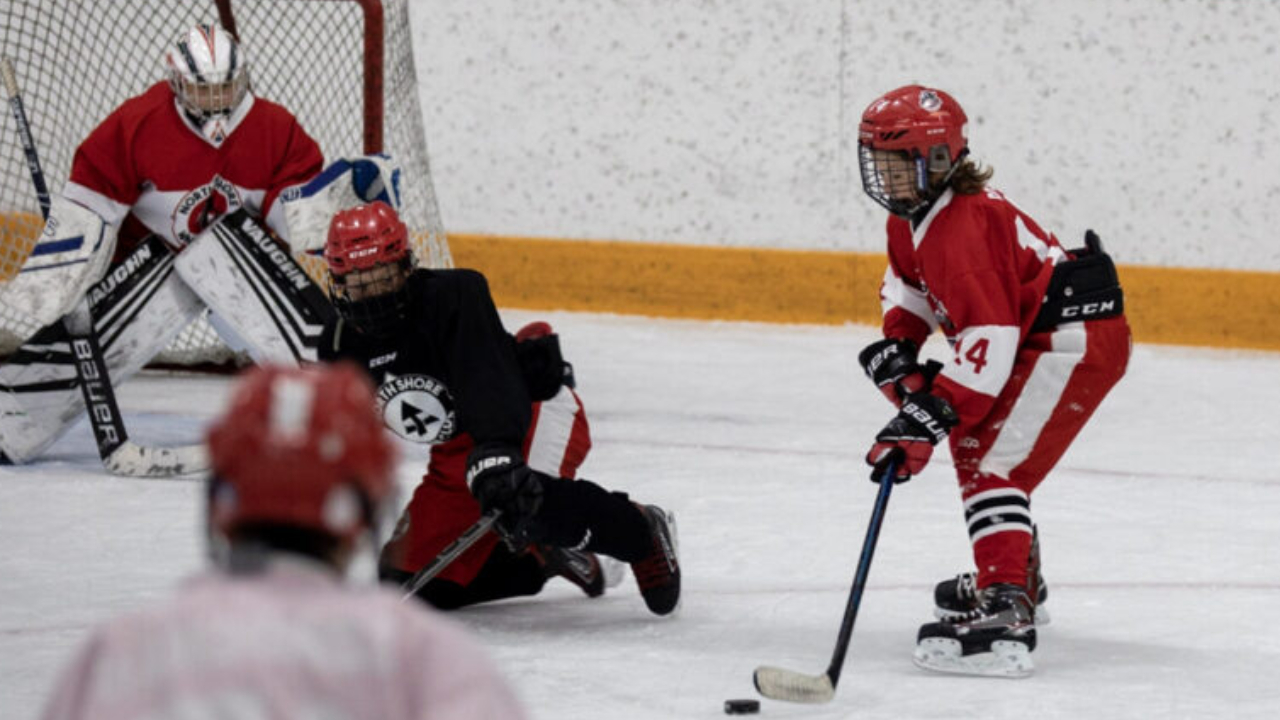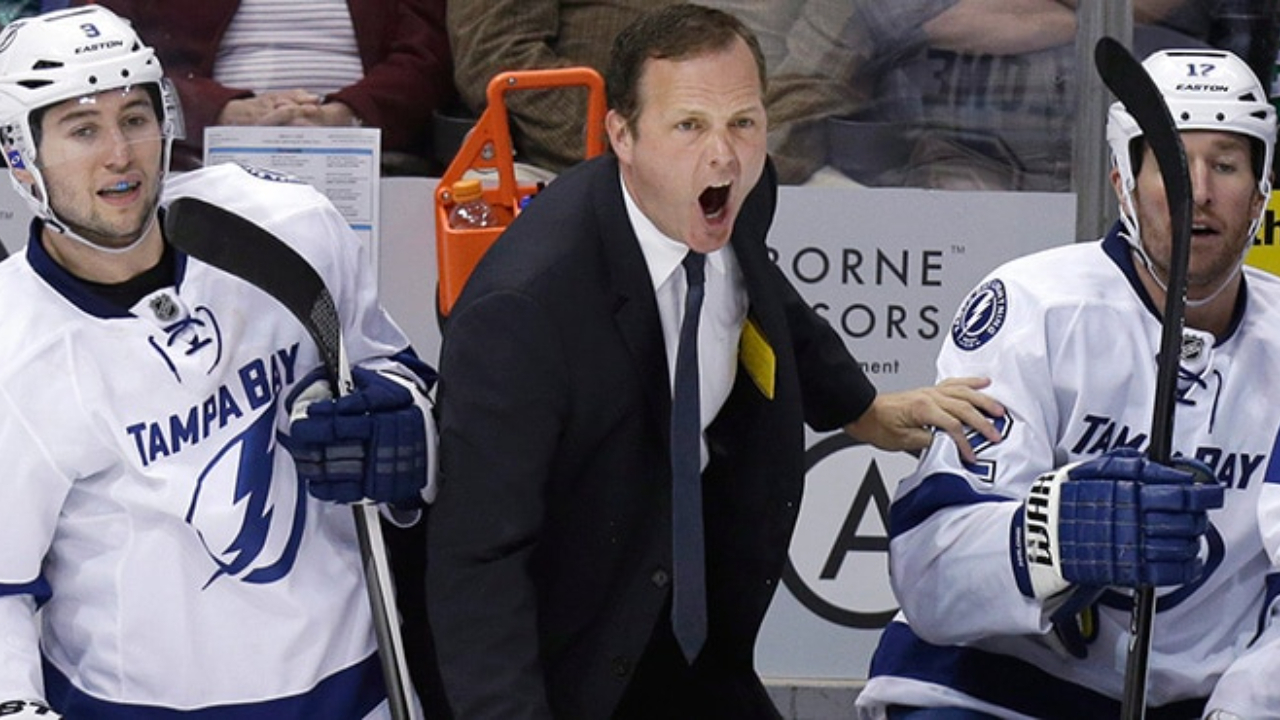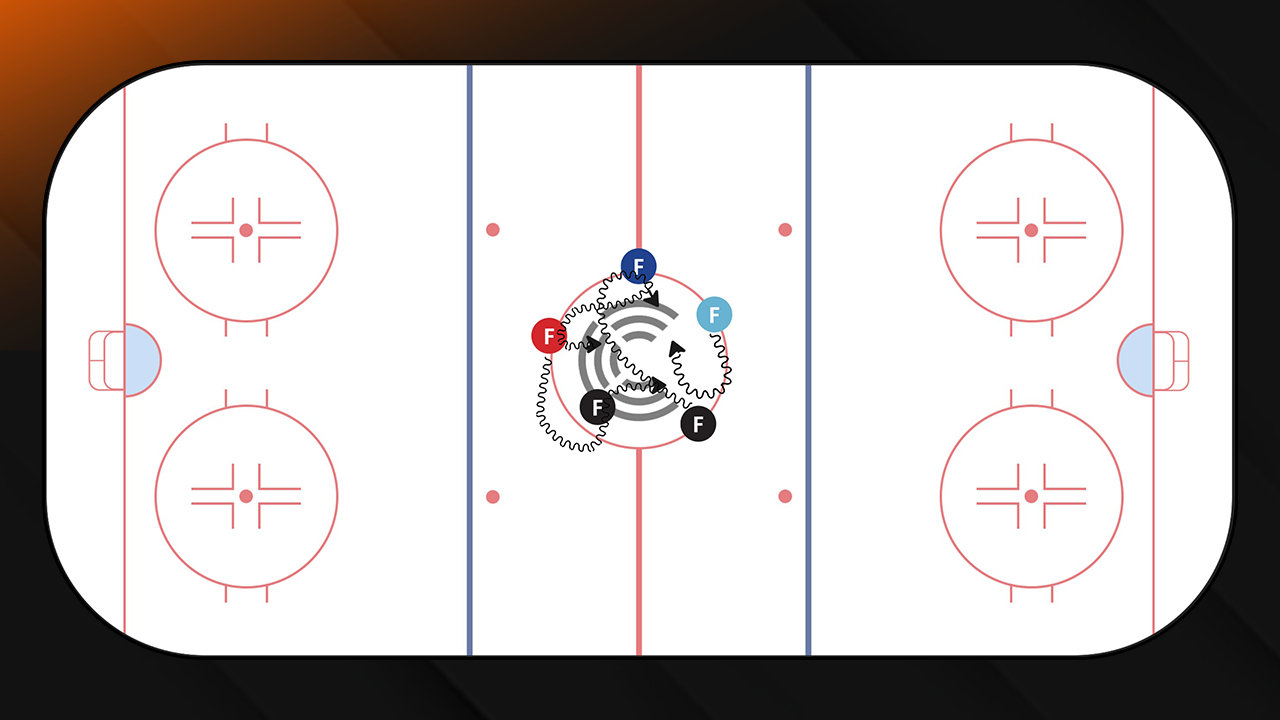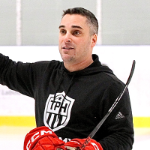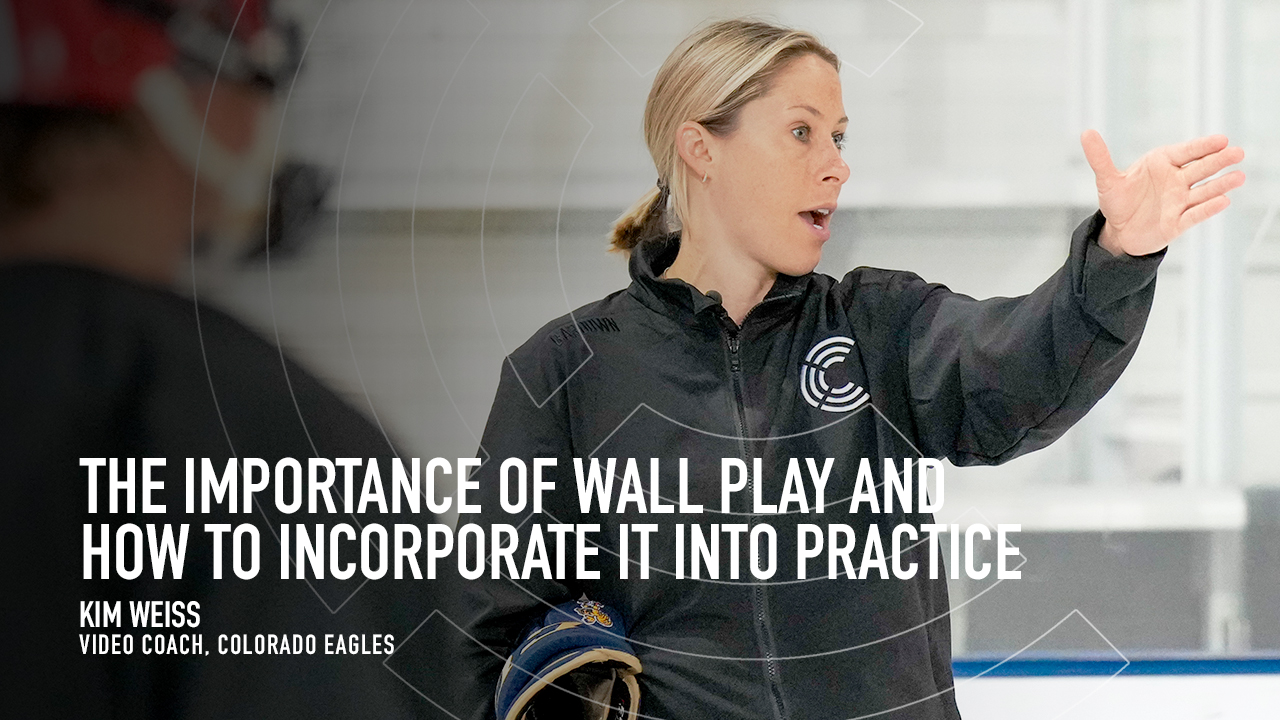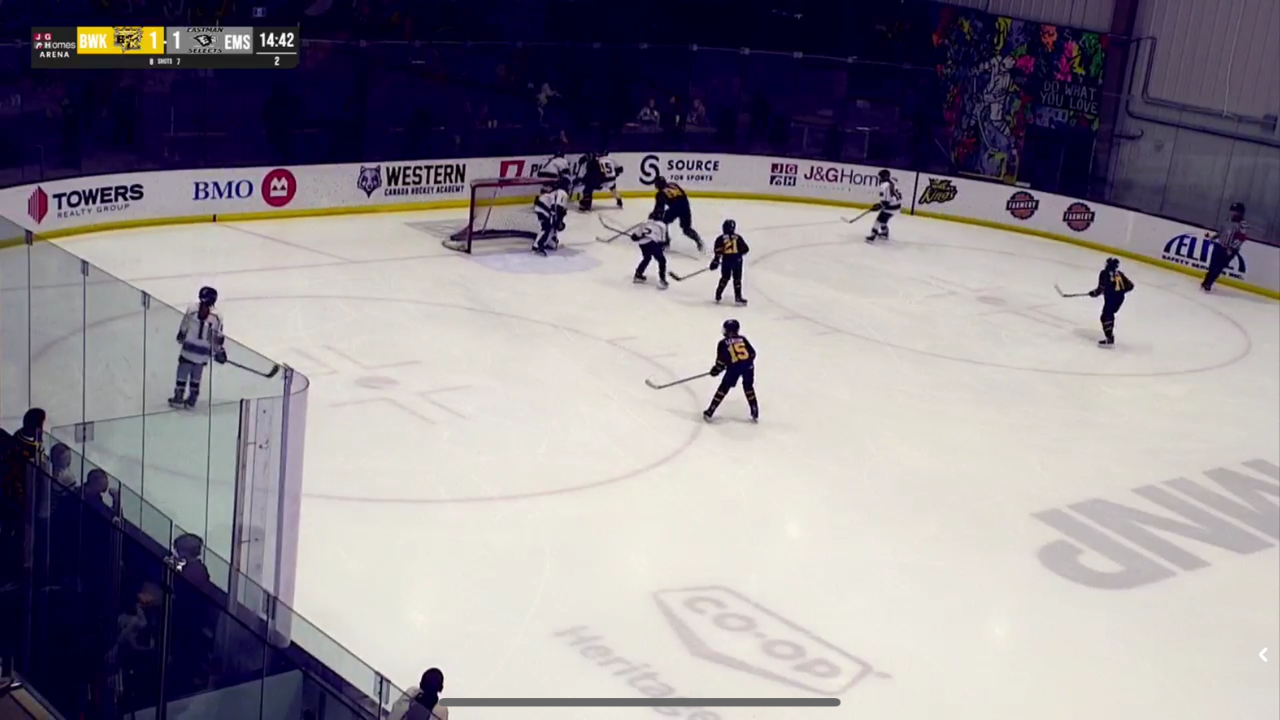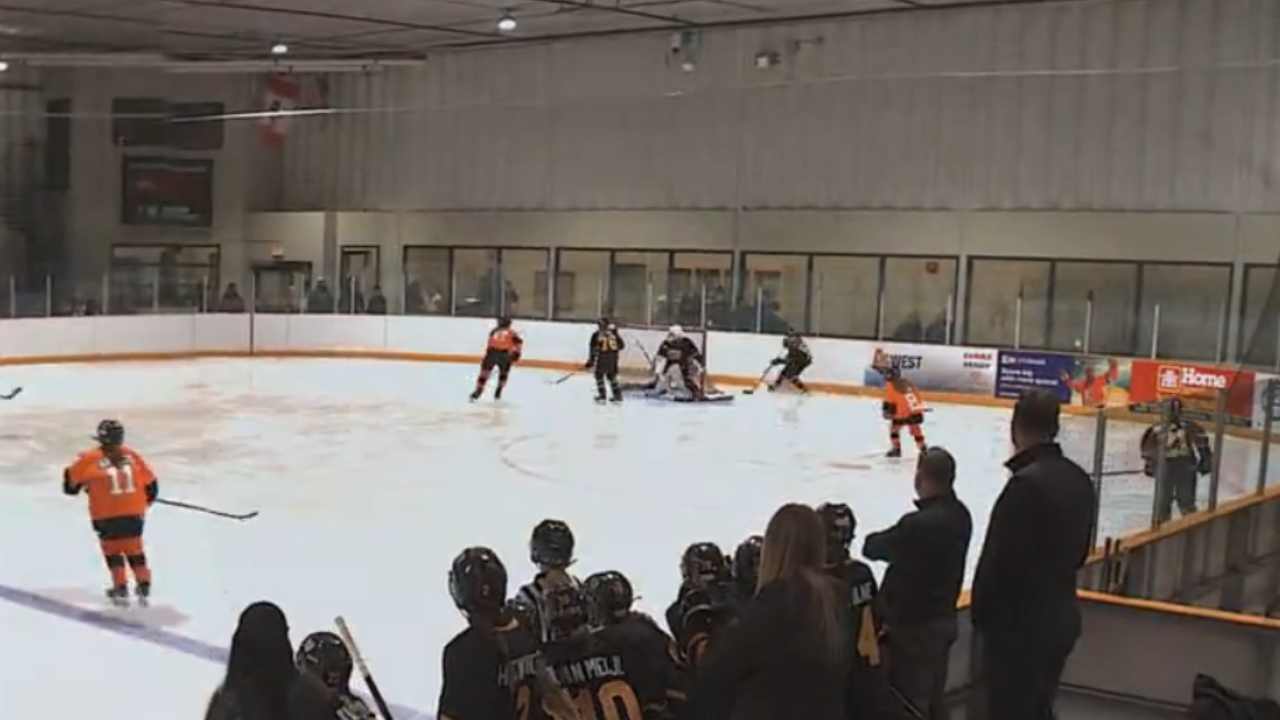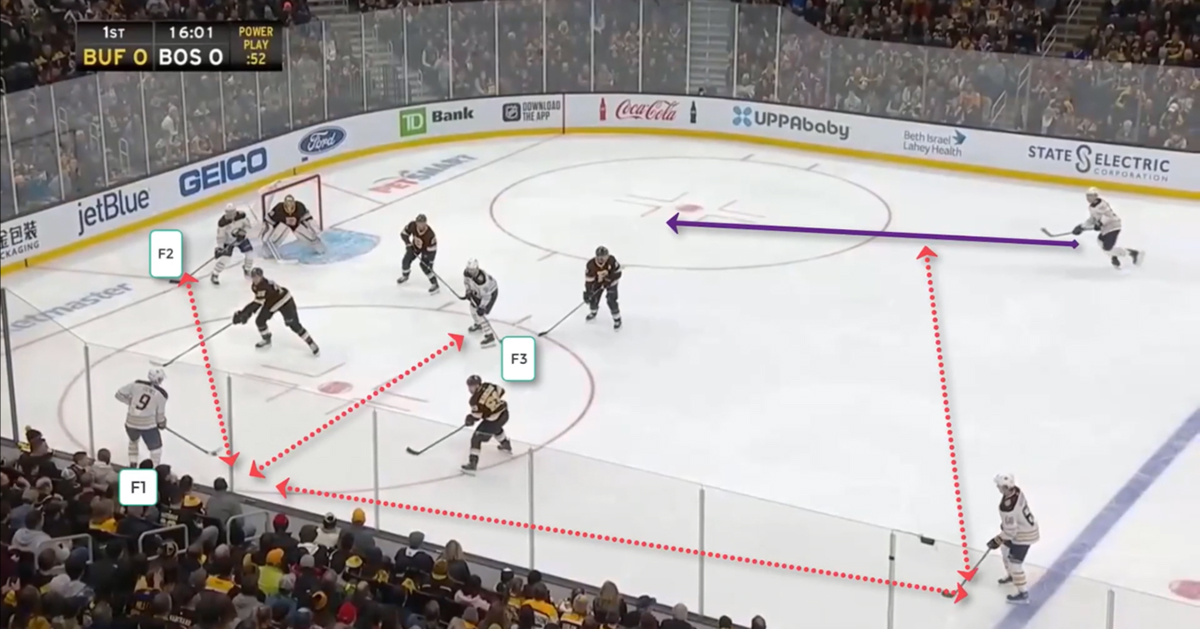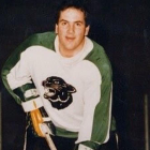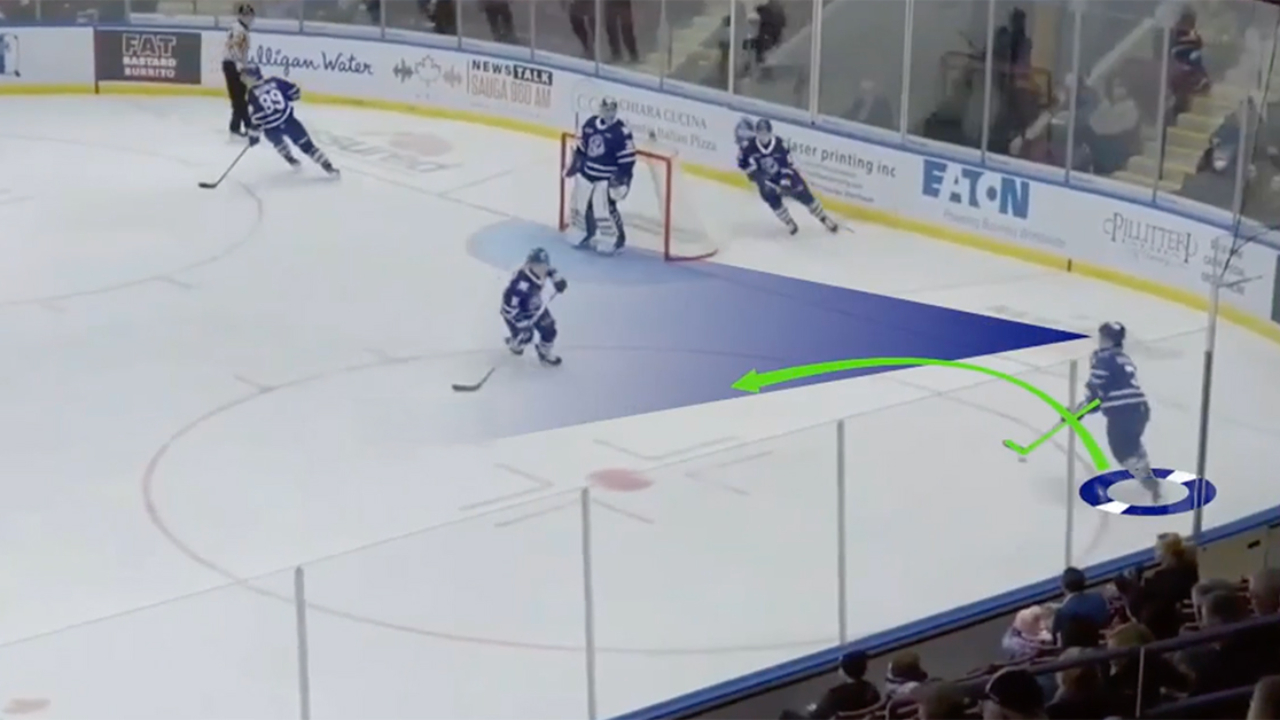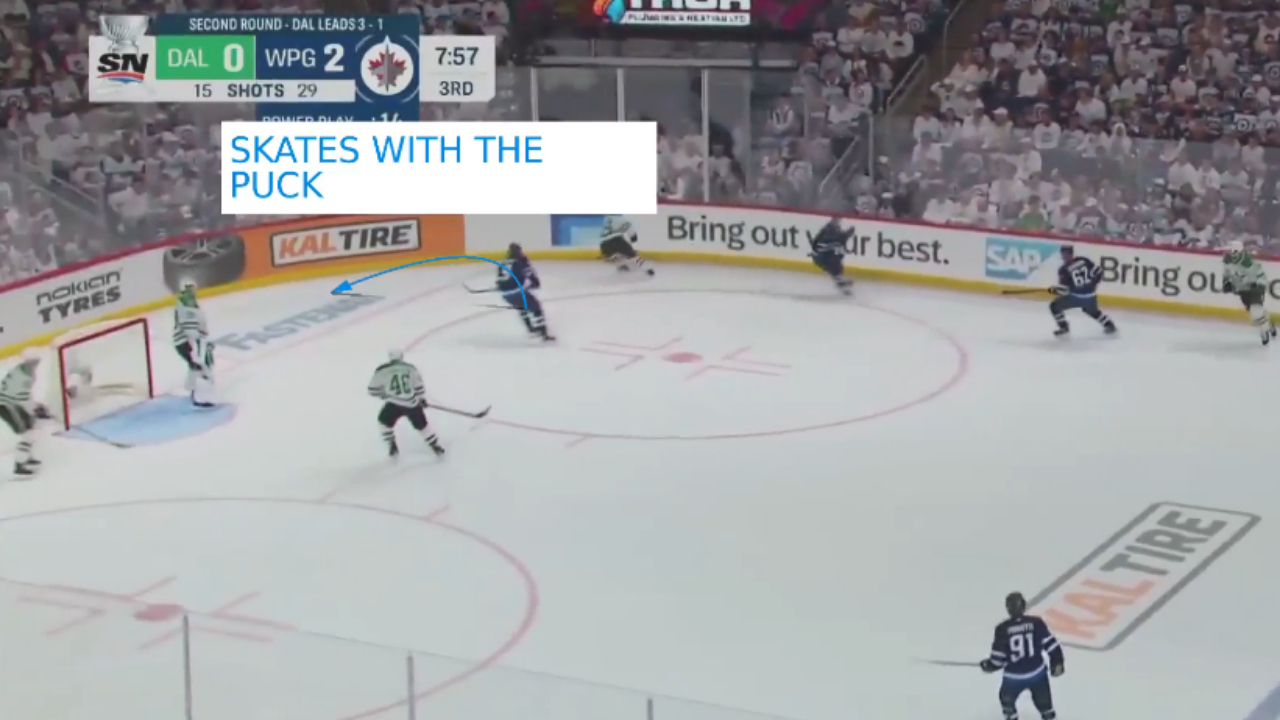Off Handed Wingers have a distinct advantage when it comes to controlling the puck during breakouts. By receiving a puck on their forehand, they gain better control and can quickly pass it to their support player. This allows them to position their bodies to shield the puck from opponents, creating a natural barrier against defensive pressure. The improved body positioning enhances their ability to make accurate passes and opens up more options for creating offensive plays.
Kim Weiss 2024 On-Ice Presentation at TCSlive
To help youth players build their skills, coaches can design drills that focus on receiving the puck on the forehand and maintaining control under pressure. Drills that involve quick passes along the boards or in tight spaces encourage players to develop faster reactions and better decision-making. Even though the primary reason behind the drill isn't focusing on the off handed winger, you can see how players must scan their pressure and make the approiate read to shield the puck from defenders, which is helping them practice effective body positioning.
Here you can see a easy half ice or full ice drill that minics what we saw Mckinnon perform during the 2025 playoffs against the Dallas Stars. See the entire presentation on The Coaches Site by clicking, The Importance of Wall Play and How to Incorporate it into Practice

Using Off Handed Wingers during breakouts increases a team's ability to maintain puck control and navigate defensive pressure. This strategy allows for quicker transitions and improved positioning, creating more offensive opportunities. Teams that implement this approach can capitalize on their wingers adaptability, making it harder for opponents to disrupt the flow of play.

